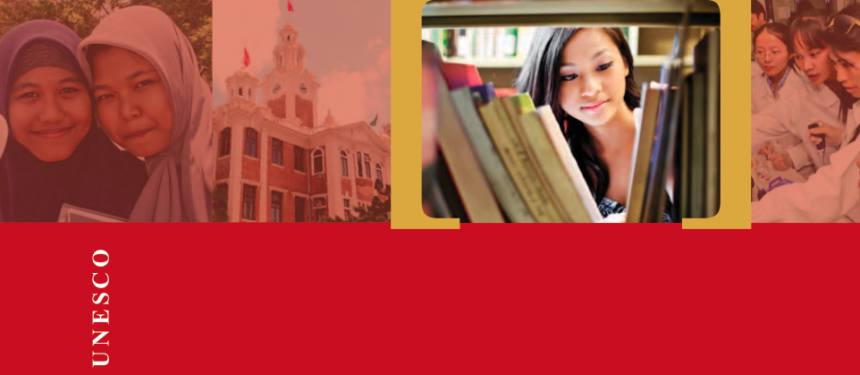A report by the UNESCO Institute of Statistics (UIS) has found that global higher education enrolments increased from 32.6 million in 1970 to 182.2 million in 2011. Forty-six per cent of growth was in the East and South East Asia region due to changes in demographics, school participation and the public’s improved perception of higher education.
News and business analysis for Professionals in International Education
Have some pie!
UNESCO Asia report advises more R&D, less focus on rankings

As a result universities and governments alike have been put under pressure to respond to the explosion in demand and have done so mainly by constructing new universities, expanding graduate level programmes, and increasing tuition fees.
South Korea, Japan, Singapore and China commit the most percentage of their GDPs to R&D expenditure
The report, Higher Education in Aisa: Expanding out, Expanding up, brings together data on expansion strategies from different sources in 26 Asian countries to be a guide for future policy makers in the region.
“Many governments are at a crossroads in terms of university reform,” said Hendrik van der Pol director of the UIS. “They can use this report as an evidence base to make critical decisions about university funding and reform, which will not just affect students but the development of societies as a whole.”
The boom in enrolments has placed huge financial strain on public university systems causing the government to pass the cost of higher education onto students through higher tutition fees and opening up to private providers.
Across the region on average nearly 40% of tertiary students are enrolled at private universities, with enrolments reaching as high as 81% in South Korea.
The increase in university fees has limited on access for poorer students and women, the report found and added that “talent is still being wasted as capable students cannot afford higher education”.
The contrast is stark especially in Viet Nam where 52% of young adults from rich households have attended higher education compared to only 4% of those from the poorest.
Meanwhile some universities also sought less expensive means of delivery including online instructions and other forms of distance education making East and South East Asia the world leaders in distance education.
While the majority of enrolments in the region have been at the undergraduate level, an emphasis has been placed on graduate level programmes order to attract top-level faculty and ensure that they have enough highly-trained professors for future generations of students.
The report has found governments are investing in Research&Development as a means to enhance economic development. South Korea, Japan, Singapore and China were found to be the countries committing the most percentage of their GDPs to R&D expenditure.
Van der Pol notes however that “in emerging countries, economic growth tends to occur by imitating and learning from imported foreign technology. This is done by firms, not universities”.
“Countries might benefit more by supporting emerging universities that are excelling in niche areas but may not yet appear in international rankings”
“But universities nevertheless play a key role by ensuring that the work-force has the skills for this technological adaptation and transformation,” he added.
A secondary hope the report highlights is that the commercialisation of university-based research can be a “meaningful source of income for universities, thereby reducing their need for public funding”.
Rising the global profile of universities in world rankings is another key objective of governments.
The report compares the systems of the THE World University Rankings, Academic Ranking of World Universities and the the QS World University Rankings and how they impact university development.
“The race is on to build world-class universities as countries seek to attract more foreign students, companies and investment. But there are hidden risks,” said Van der Pol.
“By directing more funding to top-tier universities, governments may overlook pockets of excellence in other institutions,” he argued. “In terms of national development, countries might benefit more by supporting these emerging universities that are excelling in niche areas but may not yet appear in international rankings.”
Still looking? Find by category:



4 Responses to UNESCO Asia report advises more R&D, less focus on rankings